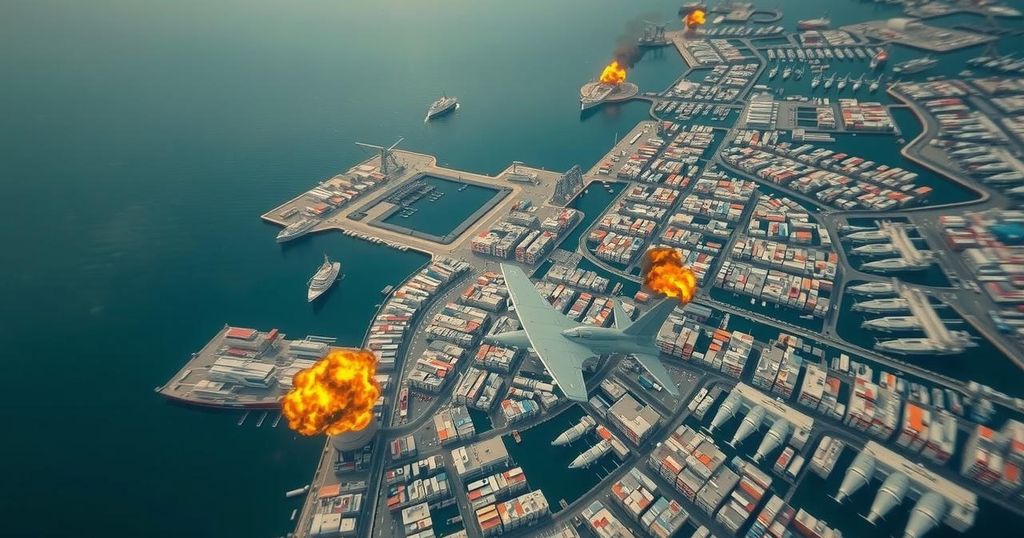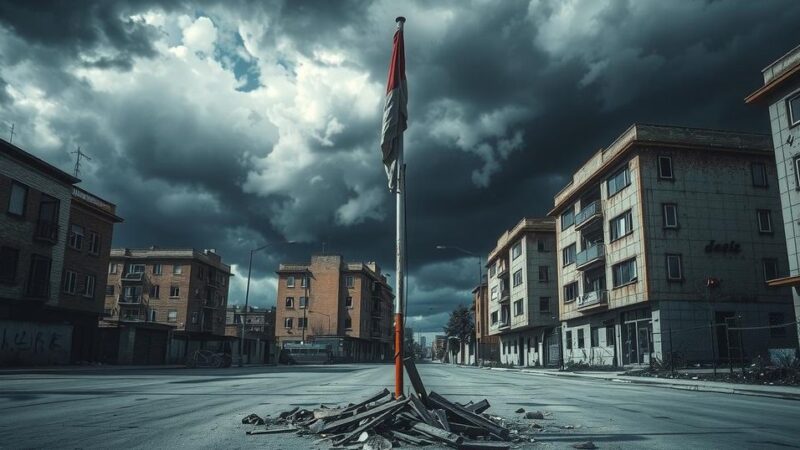Israel launched airstrikes in eastern Lebanon and Syria’s Latakia, targeting Hezbollah and Iranian-linked facilities as tensions heighten post-October 7 Hamas attacks. The Iranian military threatened retaliation against Israel following these strikes, while UNIFIL reported damages from Israeli fire at its positions, further complicating the regional conflict. The recent military actions reflect a broader struggle in the Middle East, involving multiple actors and intensified hostilities.
Recent military actions in the Middle East have escalated tensions as Israel conducted airstrikes in eastern Lebanon and the Syrian port city of Latakia. The Syrian military accused Israel of targeting Latakia, claiming two civilians were injured and a military outpost was damaged. This incident exemplifies the increasing conflict spilling beyond Lebanon’s borders, where Israel initiated a ground invasion earlier this month to combat the Iran-supported Hezbollah forces threatening its northern perimeter. Israel has intensified air operations against Hezbollah and related military installations in Syria, responding to ongoing cross-border hostilities. On Thursday, the commander of Iran’s Revolutionary Guard reiterated threats towards Israel, stating, “Do not repeat your mistake—if you misbehave, if you strike anything of ours either in the region or in Iran, we will again hit you painfully.” This statement highlights the potential for wider regional conflict should hostilities continue. In Lebanon, airstrikes targeted Al-Khiam, although Beirut reported a relatively calm evening compared to prior days, where aerial vehicle activity was noted, yet without any direct strikes. Notably, the Lebanese Health Ministry disclosed that over 2,300 fatalities have occurred in the past year, and many schools remain inoperable due to their utility as shelters or their locations in conflict zones. The backdrop of these events is tied to the broader escalation in the region, ignited by the Hamas surprise attack against Israel on October 7, 2023, resulting in significant casualties and prompting severe military responses in Gaza, claiming the lives of over 42,000 Palestinians, according to health statistics. Israel’s military has confirmed the elimination of Hezbollah commander Hussein Awada in an airstrike on Bint Jbeil, who was alleged to have been instrumental in rocket fire directed towards Israel. In conjunction, the United States has engaged in operations against Houthi rebels in Yemen, deploying B-2 stealth bombers to strike Houthi ammunition depots, thus underscoring the multilayered conflict occurring across the region. Moreover, the United Nations peacekeeping force, UNIFIL, reported that Israeli forces targeted a watchtower, resulting in damage to UN property and necessitating an urgent plea for respect towards the security of peacekeeping personnel.
The current geopolitical landscape of the Middle East remains highly volatile, characterized by a resurgence of violence involving Israel, Lebanon, and Syria. The instability has its roots in a long-standing conflict involving various factions, notably the Iranian-backed Hezbollah militants in Lebanon and Hamas militants based in Gaza. Israel’s strategic military responses are aimed at curtailing the influence of Iran and its allies, leading to a cyclical escalation that now extends to airstrikes beyond Lebanon’s borders. The assault on the Syrian coastal city represents an extension of these military operations as concerns mount over Iran’s role in regional destabilization. Likewise, the United Nations has been striving to maintain peace amid these growing tensions, indicating an urgent need for diplomatic resolutions.
This article has outlined the recent military actions undertaken by Israel in Lebanon and Syria, amidst an escalating conflict that began earlier this month following a Hamas-led assault on Israel. The complex dynamics involve not only regional players like Hezbollah and Iranian militias but also global powers like the United States, reflecting an urgent need for diplomatic engagement to prevent further escalation of violence. The incidents at UNIFIL outposts highlight the challenges faced by peacekeeping missions in regions experiencing profound conflict. The situation remains fluid, necessitating ongoing observation and analysis as developments unfold.
Original Source: www.newsweek.com






